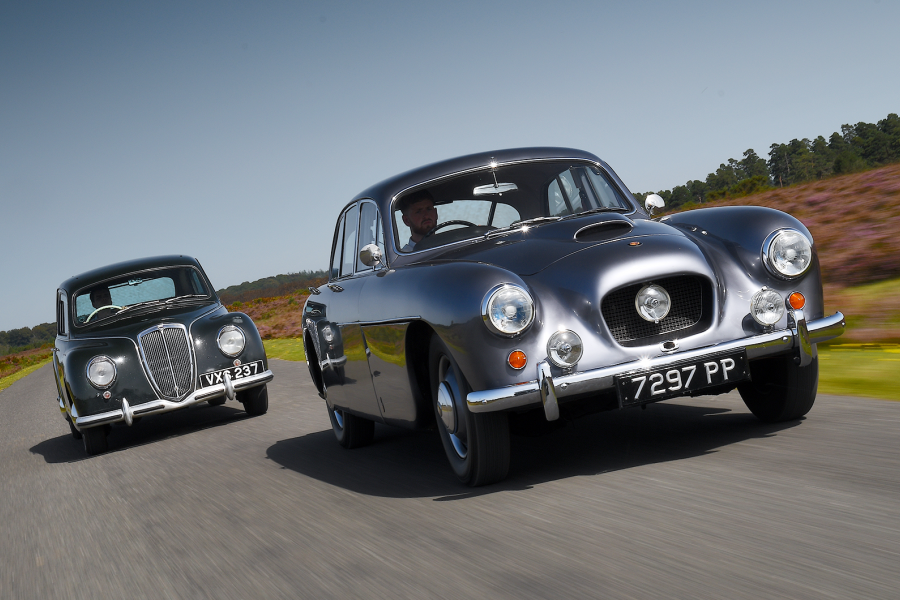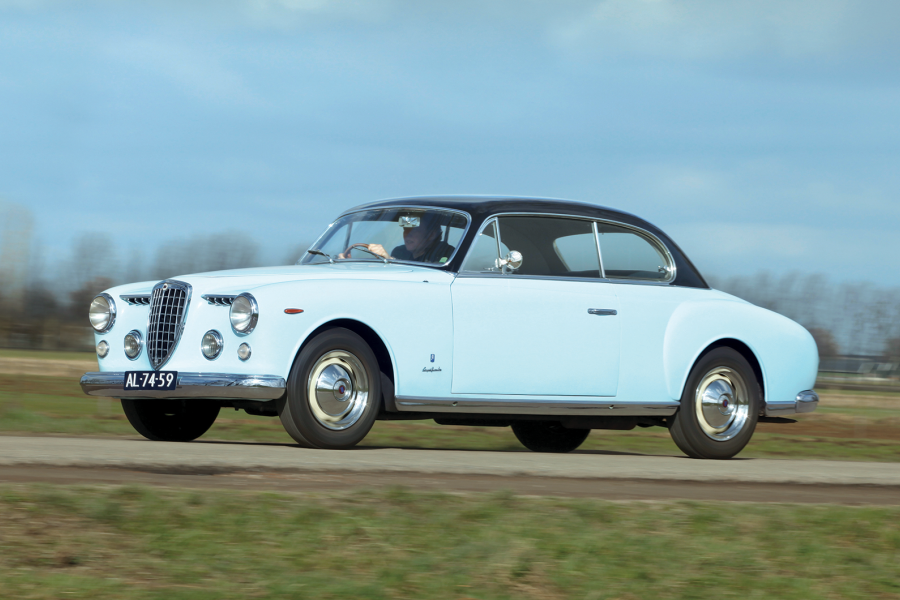It claimed three World Rally Championships – in 1974, ’75 and ’76 – before a certain degree of in-house politics meant that parent company Fiat switched its attention from Lancia’s purpose-built rally car to its own 131 Abarth.
The Stratos kept winning in the hands of privateers, though. Bernard Darniche claimed the model’s fourth Rallye Monte-Carlo in 1979, and the Tour de Corse as late as 1981. In all, it won 82 international rallies.
Form follows function in the Stratos’ delightful details
As a road car, though, the Stratos was a commercial failure – it didn’t comply with American regulations, so couldn’t be sold there or even in certain European markets.
In Italy, it was offered at roughly the same price as the Dino, but to a certain extent Lancia didn’t care about that.
It was concerned only with rally success – creating a money-spinning road car wasn’t high on its agenda beyond helping with homologation. Now, of course, all variants have become hugely desirable.
A now-iconic rear view – and super-desirable badging on this Bertone-by-Gandini car
“As with a lot of cars, people want correct, original examples that haven’t been messed around with,” says specialist William I’Anson.
“Lots were simply tarted up when they weren’t worth the money. They hovered around Dino values – or perhaps just ahead of that – for a long time, but this is a proper homologation special and one of the most iconic rally cars.
“The Stratos really marked the start of professional stage rallying – it launched Lancia in that world and the company went on to dominate it.”
He continues: “When you drive one, you can see why it was so successful. It’s a real enthusiast’s car, and you have to concentrate to get the best out of it.”
The little Lancia handles beautifully at modest speeds, but is a handful on the limit
The rewards on offer justify that concentration, that involvement.
To be honest, it is hard to think of driving a Stratos gently. Each straight bit of road becomes an excuse to listen to that glorious exhaust note one more time.
If ever there was a car that is begging to be used and enjoyed, it is the Lancia Stratos.
Images: Tony Baker (unless stated otherwise)
Thanks to William I’Anson, Paul Lawrence and Jane Houghton
THE SPECIALIST: Martin Cliffe
“The Stratos was a small-volume car that was never developed in the way that, for example, a Ford would have been,” says Martin Cliffe of Lancia specialist Omicron, himself a Stratos owner since 1984.
“In many ways, they were designed as cheaply and quickly as possible so Lancia could go rallying, and while that means that the reliability often doesn’t compare to that of a mass-market car, it does mean they’re relatively simple – a competent amateur could look after it at home.
“Everything’s quite accessible, with the exception of the alternator, which is hidden away beneath the front bank of exhausts and is an absolute so-and-so to get to.
“The brakes are a weak point on Stradales. The competition cars had 15in wheels rather than 14in, so they could have proper Lockheed brakes rather than the ATE ones. In terms of the V6 engine, it’s pretty much all Ferrari Dino apart from the carburettors and water hoses – just detail differences, really.
“Even so, some components are getting more and more difficult to find, and companies have begun to remanufacture them. The problem is, there are so few cars around – and so few that are actually covering any sort of mileage these days because of their value – that it rarely makes economic sense to make new parts or for us to carry a large stock of them.”
THE ENTHUSIAST: Ian Fraser
Motoring journalist Ian Fraser bought a Stratos “when they were cheap” in the 1980s.
“It was such an exciting looking car – I was just captivated by it. You couldn’t buy them in the UK so I put out some feelers and one turned up in Germany. I drove it back, arriving in Calais late at night and parking it on the street outside the hotel. Not ideal, but it got left alone.
“When I first drove it, I remember thinking: ‘I’ve got to be careful here.’ Still, the best way to steer it was via the throttle rather than the wheel, and it would do 140mph – as promised! I got all the UK paperwork done, which was complicated, and later used it for a long trip to the Alps.
“Contrary to expectations, it was a beautiful touring car, with little wind noise and a surprising amount of room. I took my late friend ‘Steady’ Barker as a co-driver and general raconteur, and he loved it. I actually had to fly back to the UK for a wedding at one point, left him with the car, then flew back out to meet him.
“Returning through France, the clutch hydraulics went. We stopped at a Fiat dealership, and he got us back on the road in less than two hours! It was generally very reliable, but it wasn’t the sort of package that made for a daily driver.
“It was just a magic car, with terrific performance and that lovely Dino engine. I sold it about four years ago, and that was one of my great motoring mistakes.”
THE RALLY DRIVER: Steve Perez
“It started life as a Stradale,” says Perez of his Stratos, “but I bought it about 12 years ago in Group 4 spec. With the short wheelbase, it’s a difficult car to drive. It’s very nervous, and always wants to bite you – especially over bumps. It’s much happier on tarmac.
“I’ve got a quattro, too, and that’s even harder because everything’s happening so much faster. The Stratos at least changes direction well – if a stage is tight and twisty, we’ll be okay.
“We’ve had all sorts of engine and gearbox problems – it can select two gears at once and get jammed – and it’s getting harder to find parts for it. Most things have to be manufactured.
“It’s such an iconic car, though, and nothing sounds quite like it. When we turn up in a service area, the attention we get is such that you’d think Sébastien Loeb had just arrived. Getting it to the finish of any rally is an achievement, but it’s great to line up at the start of a stage and be the lone Stratos among 20 Escorts!”
READ MORE
Motorsport memories: Jim Clark the rally star
The 15 greatest Monte Carlo Rally-winning classics of the WRC era
Motorsport memories: when the Minis were robbed in Monte Carlo
James Page
James Page is a regular contributor to – and former Editor of – Classic & Sports Car





























